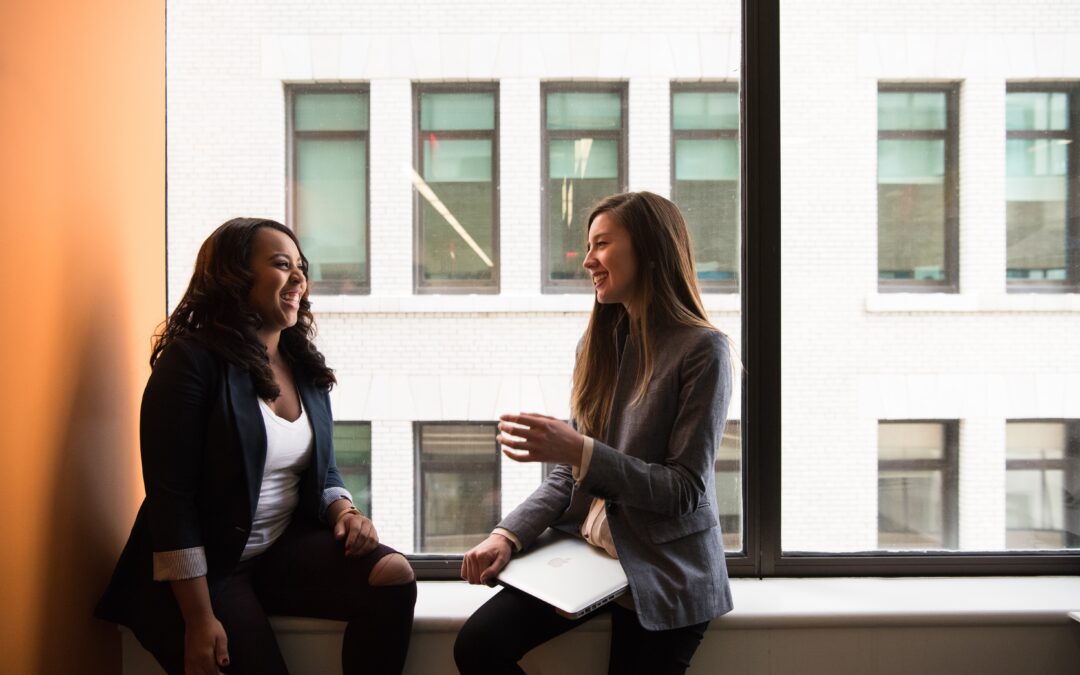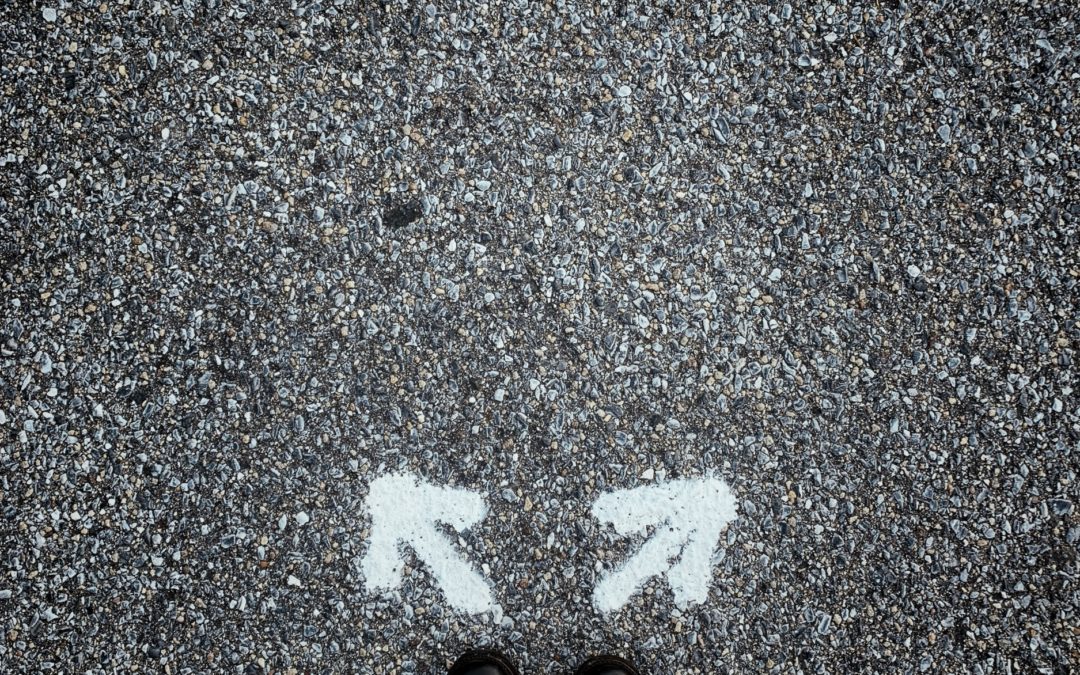
by Robyn Bolton | Jun 24, 2020 | Customer Centricity, Innovation, Tips, Tricks, & Tools
Innovation doesn’t start with an idea. It starts with a problem. Sometimes those problems are easy to observe and understand but, more often, those problems are multi-layered and nuanced. As a result, you need a multi-layered and nuanced approach to understanding them.
You need to have EPIC Conversations.
EPIC stands for Empathy, Perspective, Insights, and Connection. As my clients have experienced, conversations rooted in these elements consistently produce unexpected, actionable, and impactful insights capable of getting to the root of a problem and shining a light on the path to a solution (and meaningful business results).
EMPATHY for the people with whom you’re talking
According to Brene Brown, empathy is connecting to the emotion another person is experiencing without requiring us to have experienced the same situation.”
For example, I have a friend who struggles to stay focused and deliver on deadlines. I can empathize with her because, while I have no problem focusing or delivering on deadlines, I know what it’s like to struggle with something that other people think is easy.
Take the time to connect with people’s emotions, to understand not just what they’re feeling but also why they’re feeling that way and to connect with the experiences in your life and work that led you to feel that way, too.
See things from their PERSPECTIVE:
When we’re working on something – a project, a product, even a task – it gets a great deal of our time, attention, and energy. But it can lead us to over-estimate how important the work is to others.
Instead, ask people about the topic you’re interested in AND all the topics and activities around it. Take the time to understand where the things you care about fall into your customers’ priority list
For example, when I worked on developing and launching Swiffer, all I thought about was cleaning floors. One day, we had to decide whether to source the hair for the dirt that would be used in product demos from people, yaks, or wigs. We obsessed over this decision, debating which hair would “resonate” the most with consumers. Turns out, consumers didn’t spend a lot of time analyzing the hair in the demo dirt, they only cared that it was picked up immediately by Swiffer.
Be open to INSIGHTS
Most people use conversations to get confirmation that their ideas and recommendations are good ones. They’ll spend time explaining and convincing and very little time listening. And they definitely don’t like surprises.
This is wrong. The most successful and impactful conversations as those in which you are surprised, in which you get an unexpected piece of information and has an insight, an “a-ha!” moment.
Years ago, while conducting research with people who self-identified as environmentalists, my team spoke with a woman who had the most sustainable house I’d ever seen. Everything was reused, recycled, or composted and they generated most of their own power. But, in the garage was a huge yellow HUM-V. It would have been easy to dismiss it as an anomaly, until we asked about the contradiction and she explained that the reason she owned a HUM-V was the same reason she and her family lived such a sustainable lifestyle: her highest priority was keeping her kids safe. At home, that meant doing everything possible to help the planet, but on the roads, that meant driving around in a tank.
CONNECT with the person you’re speaking with
It’s tempting to jump right into the conversation, to ask the questions that brought you together. But that’s like proposing on the first date – you’re not going to get the answer(s) you want.
The best conversations aren’t information transactions, they’re trust building exercises. Take time to get to know each other. Make small talk, talk about the traffic and the weather, share a bit about yourself and ask about them. Throughout the conversation, share a bit about yourself, commiserate over shared frustrations, and laugh at silly stories.
By sharing a bit about yourself, the person you’re talking to will share a bit of themselves, they’ll feel comfortable admitting to things that might not make sense, and to the feelings and rationalizations that drive their behaviors.
EPIC Conversations can happen with anyone anywhere from customers in focus group rooms to employees in conference rooms. You don’t need an executive mandate to have one, so have one today and let me know how it goes!
Originally published on February 10, 2020 on Forbes.com

by Robyn Bolton | Jun 18, 2020 | Innovation
Last week, I wrote about Visual Thinking Strategies (VTS), a process of using art to teach visual literacy, thinking, and communication skills.
Typically, used in primary school classrooms, VTS has made its way into the corporate setting, helping individuals and teams to build and strengthen their problem solving and critical thinking skills, ability to communicate and collaborate, and effectiveness in delivering and receiving feedback.
While I did my best to capture the Why, What, and How of VTS in that post, there’s no substitute for learning from an expert. That’s why I asked Suzi Hamill , former Head of Design Thinking at Fidelity and the woman who introduced me to VTS, to share her experience using the tool.
Hi Suzi. Thanks for sharing your VTS wisdom and experience today. I understand you’ve been doing a fair bit of VTS-ing lately.
Suzi: Yes! Just a few months ago I was at Oxford University coaching 30 Chief Marketing Officers from large global corporations on how to apply Visual Thinking Strategies to their work and their teams. And just last week, I led a session with a group of women on the West Coast of the US.
That’s one of the things I find so fascinating about VTS. It was created to help people learn about art and was designed to be used in schools, but it can have such a powerful impact in a wide variety of businesses.
Suzi: Absolutely. In a business context, there are massive systems and massive problems, and everyone has their own interpretation of what’s going on. (imagine doctors deliberating over a diagnosis, investment analysts debating a company’s intrinsic value, retailers predicting the next fashion trend…) This creates conflict. How do you pull together a range of people and ideas to forge the best path forward? VTS is a great, simple but rigorous method to help business groups look at big problems. VTS is a way to have open exploratory conversations with a diverse set of people
This is especially true in organizations that are very execution oriented. Often organizations haven’t developed the time, space or habit to work through ambiguity. VTS opens space for there to be ambiguity and dialogue. It gives people permission to explore ideas, be wrong, and hear different points of view.
All of those behaviors are essential to making good business decisions. I wonder, have you found that some people need “permission” more than others?
Suzi: I think everyone can benefit from the VTS experience and there are some circumstances where it can be transformational.
We are often taught not to question authority. But there is a delicate balance between challenging authority and understanding perspectives At Fidelity, our first experiment focused on using it as a way to prompt open conversation when there was a power imbalance in a room. We rolled VTS out to our Design Team of about 100 people as a way to help junior designers to talk to the CEO or senior executives about their work and not get defensive. We trained them to ask the VTS questions, especially “What do you see that makes you say that?” We found that it was a great way for designers to learn how to get feedback on their designs.
Once we started having success with VTS, it was integrated into Fidelity’s 6-month long training program for the top 100 potential leaders.
That’s where we found the next circumstance – using VTS with leadership teams. We found that VTS acts as a practical way to introduce the idea that you’re not just a do-er now, you’re a thinker and, as a result, you’re going to be faced with ambiguity. Instead of shying away from it, you need to see that ambiguity is not only ok, but it is also fertile ground for us to grow our business.
That’s great but, as we both know, just because you learn something in training doesn’t mean you actually do it in real life. Have you seen VTS make that jump? Get people to move from knowing to doing?
Suzi: I have.
At Fidelity, we would VTS customer research. We would use the principle of VTS more than follow the strict methodology. We’d post our research on walls – sticky notes, photos of customers, flowcharts, everything, and we would bring in stakeholders and use the VTS process to tease out insights. We give people time to LOOK and internalize what they were seeing before we told them what to think. By asking questions, we would discover what they were interpreting, identify unconscious biases, and learn what they already know or want to know about the customer.
At the event in Oxford, we VTS-ed the Business Model Canvas because most of the CMOs weren’t familiar with it. Just by looking at it, they teased out its purpose, what was important and what wasn’t, what was confusing, and what wouldn’t work. They walked away with a deeper internalization of its meaning
How is VTS able to do that? To help people quickly internalize new insights or behaviors?
Suzi: The best way I can explain it is that VTS is like yoga. When you teach someone yoga, with consistent practice they develop better posture and they walk and move fluidly and with strength. So, when they’re going through their day, they become more aware of their posture and adjust but they don’t go into a whole vinyasa flow.
VTS is similar because when you use it with people, you’re teaching the mechanics of dialogue, of using evidence to progress, of managing ambiguity and conflict.
It takes time to tease out the power of the process but in the end, I’ve seen it help people realize that you don’t have to agree or disagree right away. Instead, it gives them space to express an opinion and teaches them to ask questions and to ask for evidence in a way that is psychologically safe.
OK, but is it as simple as asking the 3 VTS questions?
Suzi: I wish. You need somebody who is a skilled facilitator, who can keep the group moving forward and exploring ideas.
Leaders know they should stimulate conversation… solicit other people’s opinions, but they don’t know how. In meetings leaders will voice their own opinions, rely on the loudest voices, and steer the conversation. People will pick up on these signals. They will stop exploring and focus on giving the right answer.
Often, when people are running meetings they try to participate. But that’s like trying to breathe underwater. You can’t facilitate and participate.
What have you learned & applied?
Suzi: If you want to get people to engage in a great dialog, try giving them something to look at first. It can be a metaphor or real reflection. But give them something specific to point to anchor their thoughts.
Give people time to look and think before they speak or act. Silence is Golden. Silence is not the enemy. Give people time to silently observe something. Even 1 min can make a huge difference in how people respond.
You don’t need to compliment people on their thoughts to keep them engaged. Ask them for more… What do you see that makes you say that? What more can we find? People are not often asked for their opinions. That act alone is incredibly engaging.
As a leader it is just as important to get the obvious out on the table so that you can get to true insight.
TO LEARN MORE ABOUT VTS OR TO EXPERIENCE IT FOR YOURSELF…

by Robyn Bolton | May 13, 2020 | Customer Centricity, Innovation, Stories & Examples, Strategy
I took my last flight on Friday, March 13, two days after the president’s first address to the nation about COVID-19.
It was a JetBlue flight from Charlotte, NC back home to Boston. And it was awesome!
Setting aside the fact that I was wearing disposable gloves and wiping down every surface with Clorox wipes, I felt like I was flying private. I was the only person in my row, with no one in the row ahead of or behind me. Snacks and drinks were plentiful. The stewards were friendly and attentive. Even the boarding process was swift and orderly.
But when stay-at-home orders went into effect the following Monday and I shared my travel story with clients, they were aghast. How could I take such risks? Did I feel safe? Did I wear a mask?
Their reactions surprised me. After all, these executives are frequent travelers, even road warriors they travel so much. Yet the fear in their voices revealed a changing perception of travel. What was once a necessary evil for work and an efficient solution for vacation had, in just 3 days, become a senseless risk.
In the 2 months since that flight, the airline industry has been rocked. Consider:
- 94% drop in US commercial airlines’ passenger volume
- 80% decrease in US private jet flights
- 75% decrease in the number of worldwide commercial flights per day
- 80% decline in the global daily number of flight searches
- 61% increase in the amount of time between booking and traveling
That last stat – 61% increase in the amount of time between booking and traveling – indicates that people don’t expect to fly any time soon. But is that expectation a reaction to the drastic measures taken to flatten the curve or is it a sign of changing travel habits?
Many experts and industry associations are looking to data about the airline industry’s recovery post-9/11 and the 2008 global financial crisis. According to data from Airlines for America, it took 3 years for passenger volume and revenue to return to pre-9/11 levels and approximately 7 years to recover to pre-2008 financial crisis levels.
Here’s the harsh truth – we cannot possibly know what will happen next. 9/11 and the 2008 financial crisis were fundamentally different events than what we’re experiencing now.
So while I understand why people are looking to these past events – data offers a sense of comfort and control over the future – using data from them is pointless. It offers a warm snuggly illusion that things won’t change that much and a return to the old days is inevitable.
Instead of looking to the past for answers, we need to look to physics.
Newton’s 3rd Law, to be precise. It states that for every action, there is an equal and opposite reaction.
By looking at the actions that airlines, and regulatory and legislative bodies, are currently considering, it’s possible to predict customers’ equal and opposite reactions and, as a result, what the new normal could look like.

Photo by Nadine Shaabana on Unsplash
Action: Travelers who cross state or country borders must quarantine for 14-days unless they can prove that they are COVID-19 negative
Reaction: People will limit their travel to within their home states or countries
Most US states and many countries have 14-day mandatory quarantines in place for people traveling into their jurisdictions. Given that most trips last less than two weeks, these restrictions essentially make most travel impractical.
Some places, like Hong Kong and Vienna, are trying to lessen that barrier by testing arriving passengers at the airport and, if they test negative for COVID-19, exempting them from quarantine.
But until a vaccine is widely available, “travel is likely to return first to domestic markets with ‘staycations,’ then to a country’s nearest neighbors before expanding across regions, and then finally across continents to welcome the return of journeys to long-haul international destinations,” according to Cecilia Rodriguez, a senior contributor to Forbes.

Photo by Dino Reichmuth on Unsplash
Action: Prices increase due to fewer flights, reduced capacity
Reaction: Demand decreases as vacations become road trips and business travelers continue to use virtual meeting technology
According to research by Longwoods International, a research firm focused on the tourism industry, 82% of people traveling in the next 6 months have changed their travel plans. 22% of these people have changed from flying to driving. “Our clients are a little hesitant to get on an airplane right now,” Jessica Griscavage, director of marketing at McCabe World Travel in McLean, Virginia, told CNBC. “We’re already preparing for the drive market for the remainder of the year, and probably into 2021.”
In conversations I’ve had with business clients, the shift isn’t from air to road travel, the shift is more drastic – from traveling to not traveling. For most large companies, business hasn’t stopped or even slowed. Instead, it’s shifted to technologies like Zoom and Microsoft Teams. As people become more comfortable working “virtually,” these solutions will become far more attractive and just as effective as hopping on a plane.

Photo by CDC on Unsplash
Action: 4-hour pre-flight processing to ensure that all bags are sanitized, and all passengers are healthy
Reaction: Business travelers will choose private flights or fractional jet ownership over commercial air travel
The average business trip is approximately 3 days long according to Travel Leaders Corporate, an award-winning leader in business travel. With most days packed with meetings, executives will have neither the time nor the patience to devote half-a-day to check-in, security and health screening, and boarding.
Instead, they’ll opt for private or private-like offerings such as NetJets that offer an expedited check-in, screening, and boarding process.

Photo by JC Gellidon on Unsplash
Action: Longer flight turnarounds due to the need to sanitize planes
Reaction: Demand (and prices) for direct flights will increase while demand to get to places that don’t offer direct flights will decrease
Consultants often joke about the “Misery Tax” – the premium that clients in hard reach location have to pay to make it “worth the firm’s wile” to serve them. Although that may seem crass, there’s no debating that direct flights are significantly easier and less painful than ones that require connections.
The pain of connecting flights, however, is likely to go through the roof as the 30-minute turn-around times that airlines have been chasing become nearly impossible due to increased cleaning and sanitation guidelines. Gone will be the days when travelers worried about making their connections. Instead, they’ll worry about how to fill the hours between flights.
In fact, it’s likely that the misery of a given itinerary will shift from being a “tax” passed on to clients to a filter that business and leisure travelers will use when deciding where to travel.

Photo by Sharon McCutcheon on Unsplash
Action: Airlines will use the need for more screening and sanitizing to justify more fees
Reaction: People will fly only when needed, instead opting for other, cheaper, and easier convenient options.
With $82B in additional revenue from add-on fees, airlines aren’t going to pull back from charging for “extras.” Instead, the need for more passenger screening, social distancing, and control over what is allowed in the cabin, will inspire even more add-on fees.
For example, airline industry consulting firm, Simplifying, predicts that airlines will no longer allow passengers to pick their seats but will instead assign seats to ensure proper social distancing and offer passengers the opportunity to pay for premium seats and/or keep the seat next to them empty.
Other options under consideration are banning carry-on baggage (which conveniently increases the number of bags checked and therefore the revenue from checked-bag fees) and selling safety kits containing face masks, disposable gloves, and cleaning wipes.
Already tired of being nickel-and-dimed, travelers are unlikely to willingly pay extra for required services and, as a result, are more likely to be open to alternatives such as car trips or virtual face-to-face meetings.

Photo by JESHOOTS.COM on Unsplash
There will always be demand for air travel.
But it may take generations for demand to pre-COVID levels.
Unlike 2001 and 2008, air travelers have options beyond commercial air carriers. Wealthy and business travelers can opt for private jets or services offering fractional ownership. Businesses, already eager to cut costs, will be more open to virtual face-to-face meetings. Families can re-discover the adventure of road trips and the creativity of staycations.
It is the availability of these comparable options combined with the invisible threat of disease that will cause people to re-think their habits and default options and slow the airline industry’s recovery. If it ever fully recovers at all.

by Robyn Bolton | Apr 20, 2020 | Innovation
“What happens next? You know, once all of this is over?” my friend asked. “There will be a new normal, but what will it look like?”
This is the question everyone is asking.
Lots of people proclaim to have the answer. Some are based on history, but history isn’t a great predictor of the future. Some opinions are based on trends and projections but rely assumptions which may or may not be true. Many are based on our hopes or fears, but those are grounded in emotions which can change from one moment to the next.
No one actually has the answer.
What we’re experiencing is a fundamental disruption to our way of life. It calls into question everything we believed to be true about ourselves and our worlds. It requires us to re-think things that we took to be inviolable truths. It is impossible to experience such a sudden and all-encompassing upheaval and emerge as if nothing happened.
We know things will be different once the restrictions (e.g. stay-at-home, limited gathering sizes, essential workers only, curfews) are lifted.
What we do not know is HOW they will be different and HOW LONG they will stay different.
I certainly don’t and that’s a terribly frustrating feeling. After all, I’m the person who reads the last page (or chapter) of a novel before I read the first because I want to know who is still alive and whether the ending is happy or sad. So, as you can imagine, I’m impatient to get at least a hint of what comes next.
Happily, there are ways to get that hint: Be curious, ask questions, seek input from a wide variety of sources, and observe how things progress.
Here are the questions I’m asking:
How will connection be different?
History says we’ll grow further apart. During pandemics, people choose, or are forced to, separate from one another, to stay at home, and to minimize contact with the outside world. Pandemics also highlight economic and social inequalities, disproportionately impacting the poor and working poor and inflaming class divisions. After the crisis passes, people remain wary of others and physically and emotional exhausted from the experience. They don’t want to re-live it by talking about it or, even worse, reflect on who they became during the experience.
OR…
We’re more connected than ever as the internet, social media, and video conferences make this a shared experience on a global scale. Yes, there’s a lot of crap on social media and Zoom-bombing isn’t helping things. But social media is also spreading good news — videos of people in Italy singing together and playing Bingo, people in various cities applauding healthcare workers, parades as substitutes for parties. Zoom, FaceTime, Google Hangouts, and similar services enable us to see the people we’re talking to, engage in the conversation (because it’s hard to multi-task on camera), and connect in deeper and more effective ways than we could by phone or email.
I HOPE that…
Connection takes on deeper meaning, that we’ll care more about the quality of our connections than the quantity and, as a result, invest more time with the people we care about than we do in generating likes and followers.
Gratitude continues to be part of our daily social interactions, that we say, and mean, “thank you” to the people working in healthcare, retail, restaurants, delivery, and other essential businesses.
Empathy remains a part of how we think and act because we have all shared an experience of great uncertainty, witnessed how fragile our lives and lifestyles are, and realized that we actually are all in this together.
How will work be done?
People will return to the office because they have grown tired of staying in their homes, relying on technology for virtual meetings, and having their calendars filled with meetings that were once hallway conversations. Offices are suddenly a welcome respite from the home because they are purpose-built for work, establishing physical definition between our work and personal selves, enabling direct human interactions, and creating an environment where connections between people and between ideas effortlessly occur.
Or…
More people will work from home because they value the flexibility and control it offers. Employers will have a hard time arguing that physical presence in the office is essential for most jobs when people have been working remotely for over a month. And those employers that do mandate a return to the physical workplace risk sending the message that they don’t trust their employees which could, in turn, result in employees leaving for a different employer that does trust and respect them as adults.
I PREDICT that…
Employers and employees will work together to figure out what works best. Old school managers who once resisted letting people work from home for fear that no work would be done are experiencing the reality that people are as, or more, productive at home than in the office. While employees who clamored to work from home now miss the informal chats, hallway conversations, and sense of community that are part of working from an office.
How will learning and education occur?
School will look like it did pre-COVID-19. Kids want to be back with their friends and parents don’t want to be teachers, principals, hall monitors, and test proctors. As a result, kids will go to a school building, sit in a classroom with other students their age, and teachers will teach what the curriculum requires. Inequity will continue as the richest schools are able to attract the best teachers and the most and latest resources, while the poorest schools will scrap by, focused as much (if not more) on meeting basic needs, like food, clothing, and cleanliness, as they do on teaching reading, writing, and arithmetic.
Or…
School is no longer a physical place but a set of activities and interactions. Learning happens when and how best for the student (within certain parameters, of course) and parents stay engaged in what, how, and when their kids are learning. Teachers will continue to find new ways to teach, including recording lessons once taught live to a full classroom and then engaging live with students one-on-one. Everyone will have more freedom to explore, create, discover, socialize, and learn.
I HOPE that…
This seismic shift in what it means to go to school will open people’s minds to what’s possible and increase their willingness to experiment as a means to reduce inequity and raise what’s “minimally acceptable.”
But I PREDICT that…
There will be innovation on the margins, that those who have the most resources will enjoy most of the benefits, and the majority will return to the pre-COVID-19 status-quo.
HOW LONG will the “new normal” last?
We’re human and we don’t like change. We especially dislike change when it’s forced on us. Even in the best of times, we want safety and security and we crave those things even more in periods of uncertainty. As a result, we will go back to the “old normal” as soon as we possibly can.
Or…
We have been fundamentally changed and therefore lasting change is inevitable. We see how hard healthcare workers work and the sacrifices they make. Parents are experiencing how hard teachers work and, if the tweets are to be believed, are willing to pay them millions to resume their roles. We appreciate the essential workers working grocery stores, delivering packages, and maintaining our infrastructure. We’ve returned to having conversations with family members, cooking and eating meals together, and reaching out to people who matter the most. We’ve been forced into a “new normal” but, by the end of it, it will simply be “normal.”
I PREDICT that…
The duration of the “new normal” depends entirely on how long the current situation lasts. The longer this situation — social distancing, stay at home orders, schools and non-essential businesses closed, the numbers of the sick and the dead leading the news — the greater the likelihood that things that felt new and different two weeks ago will become normal habits and expectations that endure. But, if the worst truly is over by April 30 and there’s no Round 2 in the summer or fall, we’ll return to the “old normal” as soon as we possibly can.
Originally published at https://www.datadriveninvestor.com on April 20, 2020.

by Robyn Bolton | Mar 25, 2020 | Stories & Examples
In middle school and high school my dad and I would have massive arguments about my math homework. And by “massive,” I mean arguments that make episodes of The Real Housewives look like polite differences of opinion over tea and crumpets.
The issue was not my struggles to understand the work (though I’m sure that played into things) but rather my insistence on knowing WHY I needed to learn the content in the first place.
My dad, a metallurgist before becoming a computer engineer, seemed to think the answers to “Why?” were (1) you will need to know this in the future and (2) because this is the assignment.
To which I would respond, (1) no I won’t because I’m going to be a lawyer or a writer and even if I’m not those two things I can say with 100% certainty I won’t be an engineer and (2) that is not an acceptable reason.
As you can imagine, things would escalate from there.
In the decades since, with the exception of some single-variable algebra and basic geometry, I have yet to use most of the math that I was forced to learn and I still insist that “because that’s the assignment/the rules/how things are done” is not an acceptable answer.
Usually I apply that same stubborn curiosity to help my clients find and capitalize on opportunities to do things differently and better, create value, and innovate.
But, in the last week as I, like most Americans, find myself largely confined to my home, my curiosity is extending to my own environment and habits and I’m not always prepared for the insights that emerge.
WHY am I trying to maintain all my pre-pandemic habits?
- Initial Answer: Because the experts say I should
- Insight: I have a choice and now is the perfect time to decide which habits to keep and which to change. So far, I’m keeping all habits related to basic personal hygiene, dressing, and eating, while also experimenting with other habits, like how I schedule my time
- Real Answer: We’re in an unusual time of collective uncertainty which makes this the perfect time to examine, re-evaluate, and change the things we often take as given. Like our own habits
WHY am I watching non-stop news?
- Initial Answer: Because information is empowering in uncertain times
- Insight: A screen showing “Breaking News” AND the global and US COVID-19 diagnosis and death counts AND numerous experts AND a crawl with dozens of other stories is not information. It’s noise. If the “news” has been known for 4 hours, it’s not “breaking,” it’s broken, move on.
- Real Answer: I need to schedule my information consumption and focus on facts.
WHY am I not using this time to get feedback from my own customers, especially since this is the first thing I tell my clients to do?
- Initial Answers: (1) I don’t want to bother them, (2) They’re busy with more important things, (3) They never complained so I’m sure it’s all good (4) I need to focus on the future, not the past, (5) I have other things to do, (6) Oh look, another email/text/Facebook post/bird/distraction!
- Insight: I don’t want to for the exact same reasons most of my clients don’t want to have open-ended EPIC (empathy, perspective, insightful, and connected) conversations with their customers — I’m afraid that even though they say they love me they also know that I’m not perfect and will have really great and helpful suggestions that will require me to change. (in all honesty, this is the nice version of what I say to myself)
- Real Answer: Time to put on my big-girl pants, follow my own advice, and go ask for feedback. It’s the only way improvement, innovation, and most importantly, client delight will happen
WHY do I suddenly feel the need to go outside and spend all time with people?
- Initial Answer: Because it’s Spring, the weather is nice, and I like people
- Insight: I want to go outside and be with people because I have been specifically told NOT to do those things. Just as I’m an introvert who does not like bugs or pollen, I also have a rebellious (intrapreneurial?) streak which makes me want to do exactly what I have been told not to do.
- Real Answer: I can go outside or open a window, stand in the backyard, or sit on the front porch. I can socialize, I just need to use technology and bring my own drinks and dinner to the FaceTime/Zoom/Skype/Google Hangout
WHY are there 6 dozen eggs in the refrigerator?
- Initial Answer: My husband is losing his mind OR he forgot that he bought 2 dozen eggs in each of the last two trips to the grocery store.
- Insight: These are strange and uncertain times and that rattles even the most stoic and level-headed of people. My husband was a submarine warfare officer in the nuclear navy and often tells stories of sleeping on the missiles because they were more comfortable than his bunk and unarmed. This is not a guy who reacts emotionally to events or who worries about the apocalypse. He is cautious and practical and, sometimes, annoyingly reasonable. But he also bought 6 dozen eggs in less than 7 days.
- Real Answer: Be patient, have empathy, listen to, and support everyone. Especially they people who you think may least need it. Also, I need to get over my aversion to quiche and other egg-heavy dishes.
In conclusion
Stay curious, turn off the news, be open to feedback and change, be supportive of others, let me know if (1) you’ve ever had to use calculus in your personal life and/or (2) have a great egg-heavy recipe










